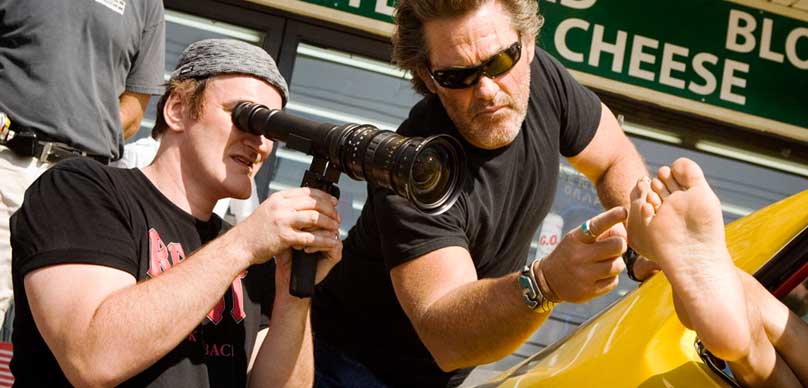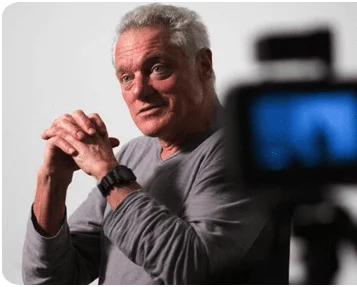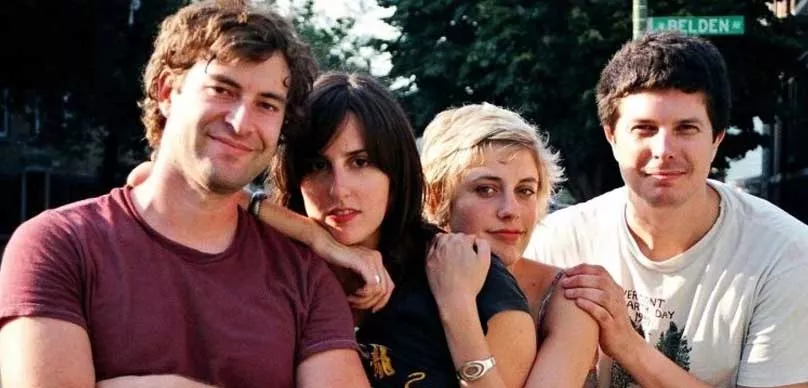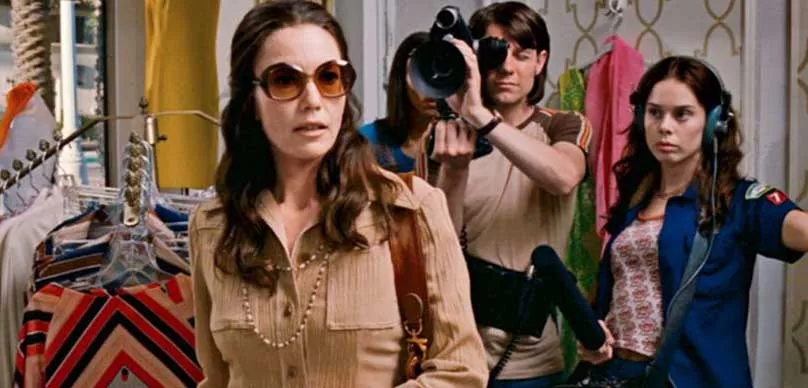Only a handful of directors knows how just to catch the attention of people like Quentin Tarantino. No doubt, he is good at doing things right. Considered as an exploitation film that stroked the sensibilities of genre nerds, the theatrical release of the double-feature throwback experiment is seen to both confuse and alienate the general moviegoing public at the same time.
Quentin Tarantino and Robert Rodriguez’s Grindhouse was released on April 6, 2007. The directors made an intentional affectation that got many unsuspecting patrons unhappy. The saw the nicks and scratches in the film as damaging. As a result, the confidence of the filmmaking duo began to wane when disappointments from general disinterest and the resulting box office came filing in.
While some may consider the gritty, 70s-style exploitation flick to be one of Tarantino’s purest movies, there is a good number of viewers who are still wondering where his contribution was. When credits of “Planet Terror” – Rodriguez’s lead film – starts to roll, these were the people who pulled on their coats and obliviously left the theater all because they felt deceived.
Up to this very moment, the film –Death Proof – still carries along a raging debate with lots of disapprovals from the viewing public. Even as a major part of the filmmaker’s broader legacy which was meant to serve as a standalone entertainment, the film generally appears to be a far more contentious piece.
While some may find it hard to gauge the lasting effect of the movie, a good number of fans – both the obsessive and casual ones – consider the 2007 American exploitation film as the worst effort of the director by a wide margin.
You can read all of Quentin Tarantino’s Screenplays here.
Death Proof: The Film
Under the collective title “Grindhouse,” the film – Death Proof – was theatrically released as part of a double feature with Planet Terror which was directed by Robert Rodriguez. Basically, it was aimed at recreating the experience of viewing the double features of exploitation film in a grindhouse theater. Though released as part of a double feature in the US, the film got a separate release outside the shores of its home country.
Quentin Tarantino both wrote and directed the film which stars Zoe Bell, Mary Elizabeth, Tracie Thoms, Sydney Poitier, Rose McGowan, Jordan Ladd, Vanessa Ferlito, Rosario Dawson, and Kurt Russell. In the film, Zoe Bell played herself as stuntwoman while Kurt Russell starred as the stuntman. The film pays homage to the muscle car, exploitation, and slasher films of the 1970s. During the 2007 Cannes Film Festival, Death proof was seen to be in the main competition for the Palme d’Or.
Death Proof: Behind the Scenes
Quentin Tarantino was inspired by the way stunt cars were “death-proof” by stuntmen so their drivers could be able to survive horrific collisions and high-speed crashes. It was this fascination that led to the production of the creation of a slasher film that features an upset stuntman with a “death-proof” car which he uses to stalk and kill sexy women.
Apart from women-in-prison films, Tarantino was looking to do a more rigid film. That was when he came up with the idea of using the structure of a slasher film to create something strict that people will love. According to Robert Rodriguez who helped title the movie, the film was simple and straightforward.
In Tarantino’s earlier film – Kill Bill– he had featured stuntwoman Zoe Bell as a stunt double for Uma Thurman and was stunned by her performance. Initially, he thought her role to be a cameo one but it later turned out to be her first on-screen acting. Zoe Bell on her part never understood the enormousness of her role until her name was featured on the film posters opposite other characters like Rose McGowan, Rosario Dawson, and Kurt Russell.
Based on the stuntwoman herself, Bell was selected to play the character, Zoe. In order to make the film look more like the typical 1970 movies shown in grindhouse theaters, the filmmakers sought to employ various unconventional techniques to reflect the style. One way they could do this was to intentionally damage the film. Throughout the feature, the film looked it was in bad shape. This is evident in the hilarious switch in title when the title ‘Quentin Tarantino’s Thunderbolt’ was abruptly replaced by a title card with an inexpertly emblazoned inscription – ‘Death Proof’ – across the screen.
The leading female role was written by Tarantino himself. Basically, he sought to create a kind of a loving homage cinematic sub-culture that many find difficult to comprehend. Viewers who are not used to the “grindhouse” cinema phenomena found it difficult to understand how the film was set out. Both in its look and feel, the film went out of its way to imitate the style of exploitation cinema that was popular in the late 60’s and 70’s.
It would appear that a vast majority of mainstream audiences didn’t find the film at all amusing. This alone led to the major criticisms leveled at it. In the first place, the film is not meant to be taken very seriously. Rather, it was purposed to be a pastiche or a parody of the class of movies a greater percentage of viewers wouldn’t want to see. But in terms of content, theme, and plot, it tends to be highly controversial and little in the way of conventional film logic.
The original idea was to pastiche two films and relay them at drive-in movie theaters as a double feature. As they move from state to state, theater owners will just have to take up the role of the filmmakers to re-cut and re-edit both films. This is the explanation for the appearance of a severely depreciating film stock, the switch between black and white and color, the sloppy editing and the purposeful mistakes in continuity.
Death Proof: The Critics
In a bid to appeal to the obsessive-type movie aficionado who are capable of appreciating the joke and getting the references, the filmmakers try to create a focused adoption of shoddy film-making which is in no wise sloppy as some may see it. To this end, it becomes quite difficult to see what people may be criticizing. A greater number of people would be reluctant to consider sevral semi-unclear movies that influenced the film as they will not actually expect it to keep them enthralled and entertained.
While the rest of Tarantino’s works have received wide praise, Proof’s merits have suffered derisive sarcasm. During a roundtable interview with a Hollywood reporter in 2012, Tarantino was quick to state that he felt the film stains his credit thereby regarding as the lowest point of quality that can be accepted from him.
However, come to look at it, the film seems to contain certain features that can rarely be found in any of his works. Tarantino’s film is such a personal work that’s got his fetishes, self-indulgence, influences, and interests at work. No doubt, everything here including the heavy flaws contributes immensely to the body of work displayed in the film.
Obviously, the movie is the palpable result of the most exciting auteur in cinema. It can be said to be a film writ in his largest, loudest letters. While some critics may see Death Proof as a remake of some cheapie slasher exploitation flicks, others can freely say it is the ecstatic fantasy daydream of the maker after night binging on girl gang.
Apart from Tarantino, there would only be a few people that admire the exploitation in the film. As a matter of fact, most of the features in Death Proof were no classics. Referencing to “vanishing point” is just unheard of. An average moviegoer must have never come across such things as “SwitchBlade Sisters.” No doubt, the movie is unbearably talky.
As part of the pastiche, Tarantino and his crew deliberately insert continuous dialogue that makes it sound chit-chatty with endless gabbing. Those who accustomed with this will find it difficult to understand that the action was deliberate. This was basically done to conserve the budgetary production of the film and at the same time, reference the downside to genuine seventies Grindhouse flick.
Death Proof: The Raves
Outside the meaningless girl talk and the ponderous lulls that can even be forborne, there are still some interesting features in the movie that cannot be overlooked. As a matter of fact, it is hard to deny that the vehicle stunts exhibited in the film are impressive. No doubt, Sally Menke did a beautiful job there! One absolute shocker that cannot be by-passed is the spectacular crash. This remarkable moment alone requires both a ‘pause and replay’ action.
The Jackie Chan factor was fully observed here when Zoe Bell heightened the tension with a sense of actual danger while performing her own stunts. Along with an admirably old-school precision, the climactic cat-and-mouse car chase proved very pristine. As an actress and stuntwoman, Zoe Bell never found the role of playing herself any challenging. Thanks to a sympathetic advantage, she found so easy to showcase her bubbly personality.
Also, the remaining casting is ideal. At first ominous and then pathetic, the renascent Kurt Russell showcases his fatherly charm and charisma into something extra ordinary. He deftly navigates through his role with tonal hairpin turns that are only typical with him. Even Mickey Rourke would have found this role to be quite challenging to handle. No doubt, the twisted ex-stuntman Mike did a great job getting off on chasing pretty women off the road.
Tarantino seeks to upgrade the Mike to the status of a near-immortal by making him literally untouchable especially when he’s in that death-proof car of his. In fact, Stuntman Mike was so elevated that he could not be killed by anyone except in the hands of another stuntman. But in this scenario, there was a stuntwoman.
In a bid to evoke the typical nature of the film’s location – Austin, Death Proof features a soundtrack packed with southern-flavored obscurities which are also part of the director’s favorite. Long before joining the industry, Tarantino has been working as a musical ‘curator.’ So, he knows just how to bring his least-gimmicky and most consistently listenable tune selections into the mix. Just so you know, the director wrote all the song titles used in the movie. As a huge part of all of his films, Quentin Tarantino was able to get his personal 45 collections into the jukebox in the Texas Chili Parlor.
Tarantino is famous for monkeying with his movies’ timeline. But unlike his other movies, Death Proof is the only film that runs in chronological order. Here, he had no choice but to skip the trickery features such as the flashbacks so as to perfectly get aligned with the down-low style of Death Proof. Littered with his personal touches, Tarantino does well to recycle “Death Proof” from thriller materials and stock horror.
Death Proof: Final Thoughts
Towards the end of the film, an amusing but unanticipated change-up occurred when the girls gained superiority over the nefarious Stuntman Mike. This alone is capable of bringing a soothing relief on the face of every aficionado praying for an imminent escape for the girls. No doubt, the girls in tight t-shirts, the other characters, the music, and the colorful iconography added to constructive nature of the movie. All these made it look like a joyous, darkly comic romp.
Apart from attempting to turn its audience on to a whole new world of cult Japanese cinema, Death Proof fully demonstrates to its audience the great use of movement, color, texture, and tone employed by the filmmaker. Nevertheless, the film is meant as a piece of entertainment. The final scene of the movie was shot near the Neverland Ranch, at the entrance to Midland School just on Figueroa Mountain Road.
Sponsored by: Special.tv – Stream Independent








